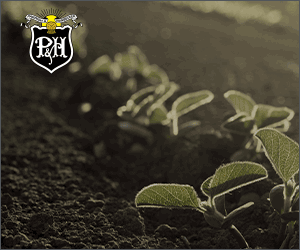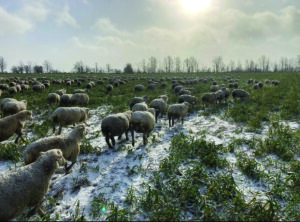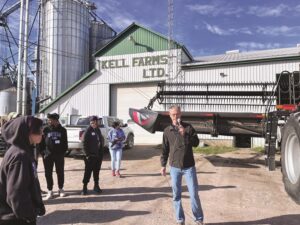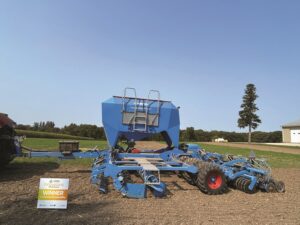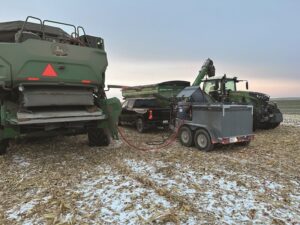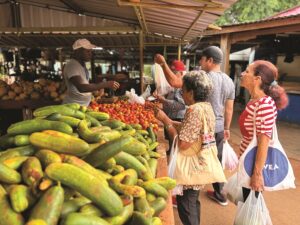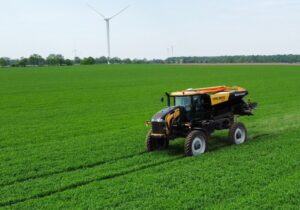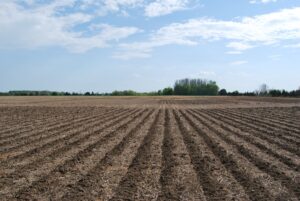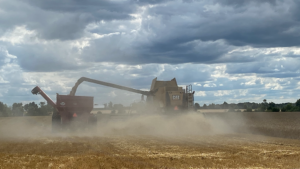Research roundup
FIND OUT WHAT’S NEW IN THE WORLD OF RESEARCH
Using thermodynamics to determine plant health
Melissa Micu
A novel way of assessing plant health is being investigated by a multi-disciplinary research team from the universities of Guelph and Waterloo.
The team, led by plant agriculture professor Dr. Clarence Swanton of the University of Guelph, is studying how thermodynamics — the branch of physics concerned with relationships between heat, temperature, energy, and work — can be used to determine plant health.
Swanton hopes the results of this study will be developed into a tool for precision agriculture, a method of farm management based on studying and managing variations within crops to maximize food production while reducing costs and the environmental impact.
The four-year project began in the summer of 2014 with the researchers trying to better understand how plants attempt to survive in different environments. Swanton says plants possess an incredible capability to sense changes in their environment and respond accordingly to achieve fitness.
Using a handheld thermal imaging camera, researchers determine the temperature differential between a plant’s leaf and its environment. This differential is then compared to the differential of a healthy plant to determine if the plant is struggling to survive in its environment. This approach could be used to detect the presence of weeds, to determine if the plant is in need of nutrients, or if it is stressed or diseased. By focusing on the health of the individual plant, production inputs could be applied more efficiently, reducing the need and cost for such applications.
Research collaborators include Dr. Roydon Fraser, Professor in the Department of Mechanical and Mechatronics Engineering at the University of Waterloo and graduate student Reece Lawrence.
This project was funded in part through Growing Forward 2 (GF2), a federal-provincial- territorial initiative. The Agricultural Adaptation Council assists in the delivery of GF2 in Ontario. Funding for this project is also provided by Grain Farmers of Ontario. •
Unique fungus could make ethanol plant revenue mushroom
Anna Wassermann
Ethanol production results in a byproduct known as stillage, which is the residual mixture after yeast has converted glucose from corn starch to ethanol through fermentation.
The solid component of stillage is dried down and sold for animal feed. The liquid component, however, is less valuable.
Dr. Robert Nicol wants to change that. Nicol, the lead biofuels researcher at the Centre for Agricultural Renewable Energy and Sustainability at the University of Guelph’s Ridgetown Campus, is investigating whether a fungus he’s working with can be practically grown in the liquid component (called thin stillage) to increase its value.
Nicol says the fungus — which has yeast-like properties — produces a great deal of oil, in the form of triglycerides. The oil has a chemical composition similar to vegetable oil and he says it could be easily extracted from the stillage for various nutritional, cosmetic, and biofuel applications.
Further, Nicol is interested in whether the spent fungal cells in the residual stillage, after oil is removed, are high in protein. If so, the residual stillage could potentially be dried down for valuable animal feed.
“The main goal of this research is to develop additional revenue streams for ethanol plants so they’re not just making ethanol but also other high-value products,” says Nicol.
Funding for this research was provided by the Agricultural Adaptation Council, the Natural Sciences and Engineering Research Council of Canada (NSERC) and the Ontario Ministry of Agriculture, Food and Rural Affairs. •
Research Roundup is provided by members of SPARK (Students Promoting Awareness of Research Knowledge) at the University of Guelph’s Office of Research. For more information, contact a SPARK writer at 519-824-4120, ext. 52667.


